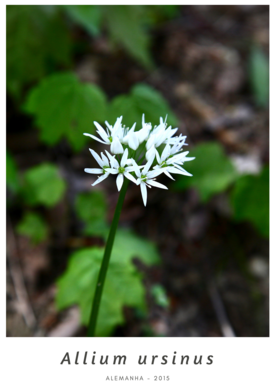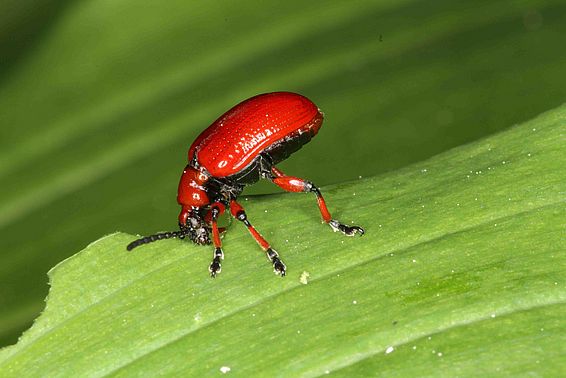16.08.2022 | Gottardo Pestalozzi | News WSL
Flowers are sexual structures of plants that are normally assumed to have evolved in harmony with their mutualistic pollinators such as bees, butterflies and honeybirds. However, a new study involving the Swiss Federal Institute for Forest, Snow and Landscape Research WSL shows that herbivorous insects play a central role.
In a recent article published in the journal Ecology Letters, researchers show that flower sexuality is controlled by herbivores such as leaf-, stem- and root-eating grasshoppers, beetles and caterpillars. The research team demonstrated that plant species that are attacked by more insect herbivores have flowers that are more masculine, an indicator of their higher effort to produce a genetically-diverse offspring. Instead of a casual finding, this result was indeed predicted by the Red Queen Hypothesis, a theory created to explain the very existence of sex.
The hypothesis ¶
The Red Queen Hypothesis was proposed to explain an important mystery that challenges the Darwinian theory. This theory states that, in evolution, winner individuals are those that transmit more genes to the next generation. However, sexual individuals transmit only 50% of their genes to each son and daughter while asexual individuals reproduce by making copies of themselves, thus transmitting 100% of their genes. Therefore, asexual individuals could quickly outcompete the sexual ones in the evolutionary race. However, this is contradicted by the fact that most animals and plants use sex to reproduce, although asexual species are known. Thus, it has been postulated that sex should bring great benefits to compensate for this initial two-fold genetic disadvantage.
The Red Queen Hypothesis states that sex is a weapon used by host species to have the upper hand in the arms race against their parasites. Indeed, when sexual organisms reproduce, they produce an offspring that contains unique combinations of anti-parasite defences, making the parasite attack weapons less effective. In contrast, the defence arsenal of asexual organisms is transmitted from parents to offspring virtually unchanged. Thus, after a few generations, parasites can learn how to disarm their defence arsenal. Therefore, according the Red Queen Hypothesis, the offspring of sexual individuals are much better defended than the ones produced by asexual individuals.
The herbivore's impact on flowers ¶
In order to test the theory, the research team around Professor Carlos Roberto Fonseca from the Federal University of Rio Grande do Norte in Brazil collected flowers from 141 German species from many environments, including grasslands, temperate forests and alpine vegetation. In the laboratory the researchers weighted the male and the female organ of the flowers, responsible for the production of pollen and ovules, respectively. Then, they calculated the maleness of the flower, a ratio of the weight of the male organ divided by the weight of both sexual organs. In general, plant species investing more in the female than on the male organ tend to be self-fertilized, producing seeds of lower genetic diversity. In contrast, species investing more in the male than on the female organ tend outcross, producing seeds of higher genetic diversity.
Another part of the research team, led by Martin Gossner, group leader at the Swiss Federal Institute for Forest, Snow and Landscape Research WSL and Adjunct Professor at ETH Zurich, went to the library and to the internet to perform a large review to estimate how many insect species eat each one of the plant species. This was only possible due to the knowledge accumulated along several centuries of natural history research in Germany. "By combining the two independent datasets, we were able to demonstrate that flower maleness is positively associated with the number of insect herbivores and the diversity of their feeding modes. These clear and robust correlations amazed us," says Prof. Martin Gossner.
“The fact that insect herbivores are affecting the sexuality of the flowers is an extraordinary finding that brings strong support for the Red Queen Hypothesis. This highlights the relevance of conserving the genetic diversity for our food plants and the danger of reducing the populations of the wildlife. Without genetic diversity all species are threatened by their parasites,” says the Brazilian Professor Carlos Roberto Fonseca, from the Federal University of Rio Grande do Norte. “In a time when humanity is threatened by many virus and bacteria, the Red Queen reminds us that we should be thankful of our multi-ethnic heritage that helps bring natural resistance against our parasites and are quintessential for our long-term survival,” concludes the researcher.
Always up to date: Subscribe to WSL Newsletter
Contact ¶
Publications ¶
Fonseca C.R., Gossner M.M., Kollmann J., Brändle M., Paterno G.B. (2022) Insect herbivores drive sex allocation in angiosperm flowers. Ecol. Lett. 25(10), 2177-2188. https://doi.org/10.1111/ele.14092 Institutional Repository DORA
Copyright ¶
WSL and SLF provide the artwork for imaging of press articles relating to this media release for free. Transferring and saving the images in image databases and saving of images by third parties is not allowed.




